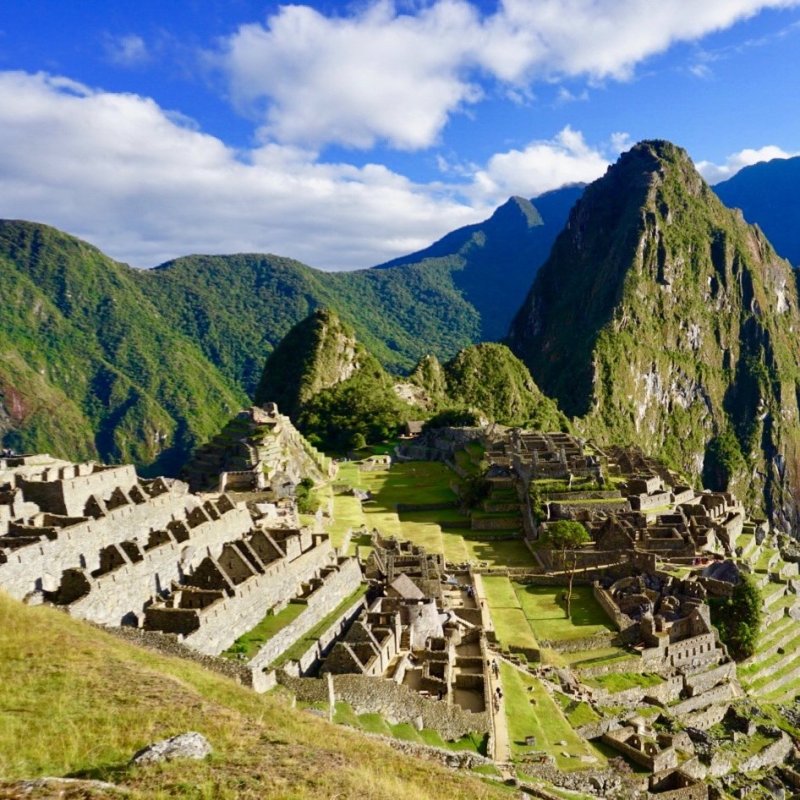
Heather Markel
Peru is one of the places that fascinated and terrified me before going. Several years ago, I saw a psychic in America. She told me I’d be traveling a lot and that there was healing work for me in Peru. I assumed she meant I’d do ayahuasca. This assumption, combined with stories of kidnappings and violence, left me unsure about whether I should visit.
Videos by TravelAwaits
What drew me to Peru were all the colorful photos and other people’s accounts of how much they loved it. I realized that if Colombia is nothing like the stereotypes, I should be more open-minded about Peru. What I found was my own haven and a truly healing experience — happily without ayahuasca. Here are the most important things I learned.

Heather Markel
1. Book Transportation From The Airport In Advance
No matter what country you’re arriving from, all the flights seem to arrive late at night. Especially if you’re traveling solo, this is not the time to save money on safety. Your hotel or hostel should be able to send a car for you. This way you can get a driver’s name and number in advance, and someone will know when to expect you and the car you’re in.
2. Uber Is Not Recommended
As I travel the world, Uber is often my first choice because it’s safer than the local taxi services. The app allows me to notify up to five people of every ride, giving me an additional feeling of safety. That’s why I was surprised to learn that in Peru, they don’t regulate their drivers. I was told by locals to use Cabify instead.

Heather Markel
3. Lima Is Not As Dangerous As I Feared
Lima doesn’t have the best reputation for safety, but I felt overly dramatic for the fears I built up about it. Miraflores has police everywhere and is one of the safest areas in Lima. Though I didn’t do anything risky or go out alone at night, I felt very safe walking around the city during the day.
4. Free Walking Tours Required
I took free walking tours in Lima, Arequipa, and Cusco. There are many to choose from. I enjoyed using Inkan Milky Way. Because of my guides in Lima, I learned that a city which, at first glance, seemed like nothing more than Miraflores and shopping, has an artistic center and a sprawling downtown with fascinating history. In Arequipa I learned about the impact of the nearby volcano, and I got to drink a pisco sour on a hidden rooftop that you can’t access without the tour guide. In Cusco, we learned about the city layout, played with llamas, and learned some of the more trustworthy places to shop in the local market. I found these walking tours essential to having a great overview of each city.

Heather Markel
5. The Food Is Some Of The Best In South America
When I saw the corn in Peru, I was flabbergasted. If that corn grew in America, I’d assume it was full of hormones. In Peru, the corn is huge, and it’s delicious. Indulge in it every chance you get. It’ll be available with your meals and as dried snacks everywhere you look. Llama and alpaca — if you can get over eating cute, furry animals — are delicious. Bonus: They have no cholesterol. The best alpaca I ever ate was in Arequipa at a pre-Incan restaurant called Sonccollay.
You can also read up on the best local dishes to try in Peru here.
6. Guinea Pigs Are Not Pets
This was the most disturbing thing I learned in Peru. There are farms with guinea pigs. I thought they were for petting. The awful truth is that they’re for eating. Even worse, I gave in to trying new things when a new friend ordered one for dinner. It was cooked, brought to our table and displayed like a suckling pig, then cut into pieces. I couldn’t get over the feeling I was eating a kid’s pet, and it was chewy and slimy, so I won’t eat that again. Honestly, I’m still racked with guilt about the experience.

Heather Markel
7. Travel By Bus Is Excellent
Since I traveled through Peru alone, I wanted to use transportation with other people — without booking an official or expensive tour. That’s one of the reasons I chose Peru Hop, which ended up being a fabulous way to see the country and meet wonderful new friends.
8. If You Plan To Take Ayahuasca, Do Your Research
Like many other people, I was curious about ayahuasca, so I looked into it. I’m glad I did. I had fantasies of stewing in spirituality and gaining deep personal insights. I knew, before going to Peru, to work only with someone I trusted, and not do it alone because of the risk of being taken advantage of sexually. While in the country, I heard stories of people getting sick (and even dying) from taking incorrect doses of the plant. I also learned there’s a cleansing period required as part of the process.
For two weeks prior to the ceremony, you can’t eat meat, drink alcohol, or have sex. Then you fast two days before. Once you drink it, you have no control over your bodily functions, and you’re in a room full of strangers who also have no bodily control. Suffice to say, all romantic notions vanished, and I skipped it. If you decide to experience it for yourself, make sure you thoroughly research not just who you’re receiving it from, but all the requirements. An industry is being created around Westerners who want to fly in for a weekend ayahuasca fix, and it’s no doubt ruining what’s supposed to be a sacred experience.

Heather Markel
9. For A Bunch Of Losers, Peruvians Behave Like Winners
I was in Lima for the final world cup game when they lost to Brazil. I don’t know how I lucked out, but I got the last seat in a restaurant in the center of town. The entire city was fixated and emotional, and the true spirit of Peru came out during the after-party. I expected them to be sad about losing. Instead, they celebrated their team making it to the world cup finals, an amazing accomplishment for them. Happiness and partying spilled into the streets, and I’ve never seen a losing country celebrate so heartily.
10. It’s Extremely Affordable
One of the best parts of travel to Peru is how affordable it is. You can eat decent meals, stay in accommodation that’s safe, take tours, and not kill your budget. In Lima, Arequipa, and Cusco, there are plenty of expensive restaurants, but I was surprised at the quality of excellent food to be found in more budget-friendly options.

Heather Markel
11. Research Prices Before You Buy
Even if you find the prices ridiculously low, you should always negotiate. Cusco has some of the largest selections of ponchos you can find. If you visit three different vendors with the exact same merchandise, they’ll give you three different prices before you even start negotiating. Pretty much anything you’ll want is sold by numerous vendors, so take your time and get a good price.
12. Altitude Sickness Can Be Treated Without Drugs
Unfortunately, I suffered a great deal from altitude sickness when I was over 13,000 feet. I had my prescription Diamox with me, but with all the potential side effects, I decided to see if I could make it without the drugs. I learned that time is the best remedy, but when those bad headaches strike, they can be battled with herbal remedies. Of all the ones I tried, my favorites were chachacoma, muna muna (herbs found at local artisan shops), and Alti Vital, which is completely herbal and can be found in most pharmacies in Peru.
Overall, Peru is filled with colors, delightful tastes and smells, and wonderful people. I loved Arequipa for it’s beauty and excellent food. In Cusco I saw a Shaman who gave me a very accurate reading with coca leaves. In Puno, I was delighted to learn about the sacredness of these leaves in Peruvian culture and saddened to see how it was tainted by the advent of cocaine. Whether it’s the history, the colored mountains, the crisp air at high altitudes, or the surprising intelligence of the Incan communities who built structures with such fortitude and beauty, Peru is one of the most fascinating countries I have ever had the pleasure of experiencing.
Want more on safe solo travel around the States and the world? Check out “What I Learned From Traveling Solo For The First Time” and “Traveling Solo Over 50: 7 Tips From The Experts.”
